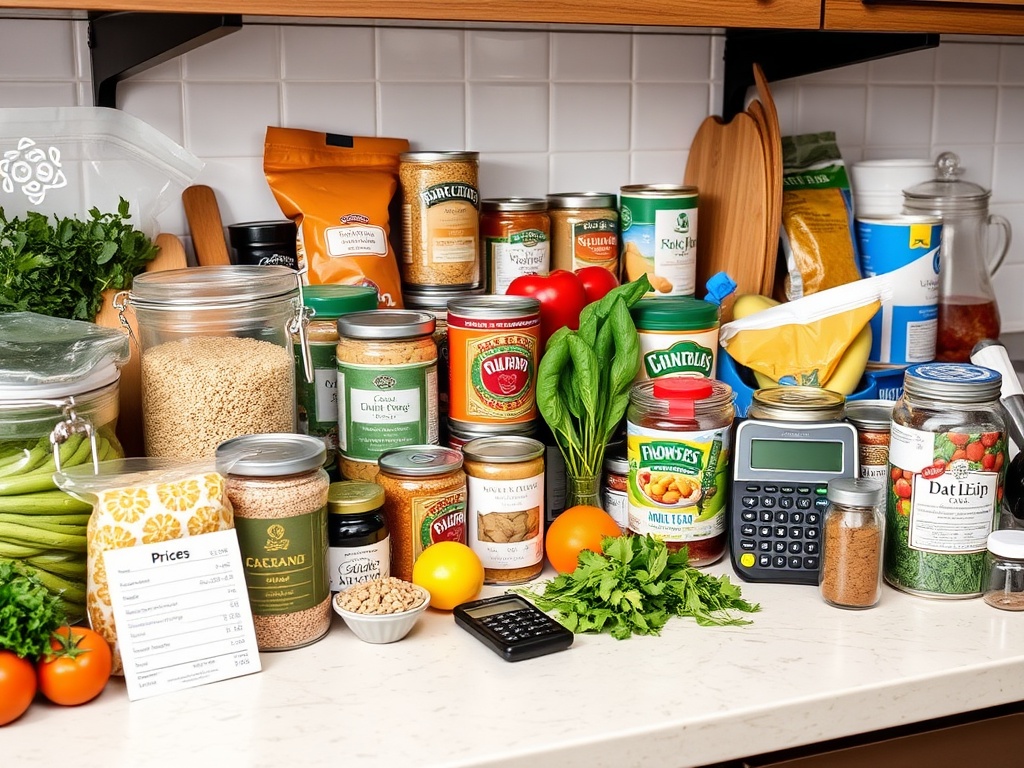1. Skip a Shop
Many people find grocery shopping to be a tedious chore. To alleviate this burden, consider reducing the frequency of your shopping trips. Instead of shopping weekly, aim for a larger grocery run every two weeks, supplemented by a quick visit for essentials like fresh fruit, vegetables, and milk. This approach not only saves time but also minimizes impulse purchases. Be strategic about where you make these supplementary trips to maximize savings.
2. Empty Your Cupboards
Take a moment to organize and assess the forgotten items lurking in your pantry. Gather all those cans and packets you’ve been meaning to use and display them prominently on a shelf or your kitchen counter. Visibility increases the likelihood of using these ingredients, helping you avoid duplicates on your shopping list. Consider snapping a photo of your pantry inventory before heading to the store, so you’re reminded of what you already have. No one needs to buy yet another jar of pesto or a sixth bag of penne pasta. Remind yourself that you can always return to the store for fresh items instead of hoarding them at home.
3. Be Imaginative
Food writer Amy Sheppard encourages shoppers to approach recipes with a flexible mindset. When planning a meal, evaluate whether every ingredient is truly necessary. For example, is fresh parsley absolutely essential, or can you substitute it with the spinach you already have? Embrace creativity in your cooking and don’t hesitate to omit ingredients that are unlikely to be used again. Her upcoming book, Easy 10 (Quadrille, £22, available April 24), highlights ten common supermarket ingredients and transforms them into budget-friendly meals.
4. Plan Your Shop Around the Most Expensive Items
Identify the high-ticket items on your grocery list, such as meat, specialty oils, or laundry supplies, and conduct a price comparison before deciding where to shop. Focusing on saving a few pounds on these pricier items is a more effective strategy than obsessing over smaller expenses throughout your shopping trip.
5. Outsmart the Shelves
Supermarkets are designed to encourage spending, often placing the most profitable items at eye level to catch your attention. Gluten-free expert Becky Excell advises shoppers to explore above and below eye level when navigating the aisles. Affordable alternatives to staple ingredients may be found on the upper or lower shelves, where they’re less likely to be noticed. The products that generate the most revenue for supermarkets tend to be strategically positioned at eye level for easy access.
6. Keep a Record of Your Spending

Monitoring your grocery spending can be challenging, especially when making multiple small purchases. Sheppard suggests limiting your shopping trips to twice a week and utilizing banking apps to track your expenditures. This practice will help you establish a realistic budgeting plan. Consider creating a simple spreadsheet to log your food shopping expenses; it can be more engaging than it sounds!
7. Share Your Steak
Reevaluate your approach to purchasing meat, which often takes up a significant portion of your grocery budget. Rather than serving large cuts of meat to each person, consider presenting a beautifully arranged platter with thinly sliced steak or chop, complemented by a flavorful sauce and an assortment of vegetables or beans. This not only stretches your meat further but also enhances the communal dining experience.
8. Practice ‘Free’ Meals
While there’s no such thing as a truly free meal, you can save money by dedicating certain evenings to using up what’s already in your fridge, pantry, or freezer. This practice can help prevent unnecessary trips to the store and reduce food waste.
9. Read the Small Print
Becky Excell points out that if supermarkets displayed prices solely based on cost per weight, consumer habits would shift dramatically. Many products are packaged and priced in a way that makes them appear to offer good value when they actually don’t. Always check the price per weight on shelf labels, as this can reveal hidden costs. For example, a 25g packet of cashew nuts priced at 60p may look appealing, but it translates to £24 per kg, while a 300g packet priced at £3 is only £10 per kg. Awareness of these pricing strategies can help you shop smarter.
10. Don’t Assume Supermarkets Are Always Cheaper
While supermarkets benefit from bulk purchasing power, they don’t always offer the best prices compared to independent shops. For instance, my local fishmonger sells salmon for £19/kg, while Aldi and Sainsbury’s have a price match at £16.21, but the quality differs significantly. Many other retailers charge upwards of £22/kg. When you visit supermarkets, you’re also more likely to make additional impulse purchases. Consider asking your fishmonger for customized portions to avoid waste.
11. Get a Delivery
Although some believe grocery delivery services are more expensive, they can actually save you money in the long run. If you factor in parking fees or transportation costs to the store, opting for delivery might end up being more economical. Additionally, having groceries delivered can help curb impulse buys, allowing you to stick to your shopping list.




